Is pre-loved fashion saving the planet?
Second hand fashion (or pre-loved if we’re talking luxury) is having its moment. Whether it’s Vinted, Vestiaire, Lampoo or simply Oxfam, everyone seems to be in someone else’s clothes. Which is a good thing as the fashion industry is an environmental horror story, currently belching out 10% of humanity’s emissions.
We had an opportunity to work with Lampoo, a prominent pre-loved luxury retailer, to effectively communicate their sustainability initiatives. In doing so, we had to discover the limits of what we could claim. Turns out, it’s not as straightforward as you might think.
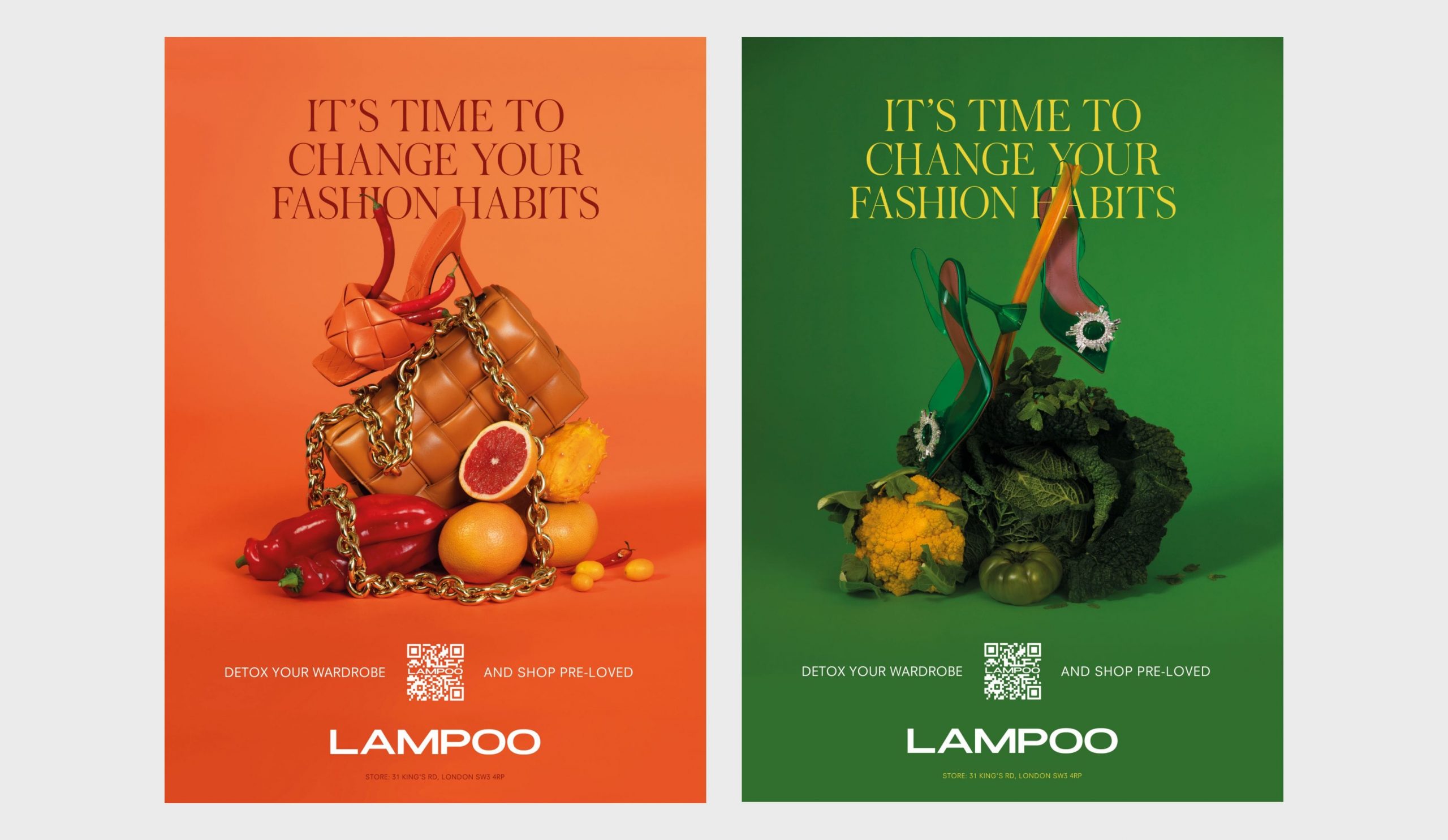
Our campaign for Lampoo: ‘Fashion addicts, change your habits’, was as much about education as promotion. Rather than be earnest and lecturing, we went bright and fresh, with a loud splash of colour to brighten the January gloom in London and Milan. We gently aligned with people’s perennial New Year resolutions of changing their lifestyles, eating healthier, going to the gym and just generally being better. High fashion amidst fruit and veg hinted at the wider meaning of healthier, in the context of conscientious consumerism, environmental respect, etc, without beating you over the head with guilt.
But what are the numbers of the circular fashion industry? Does it do any good or is it just making shoppers feel less guilty?
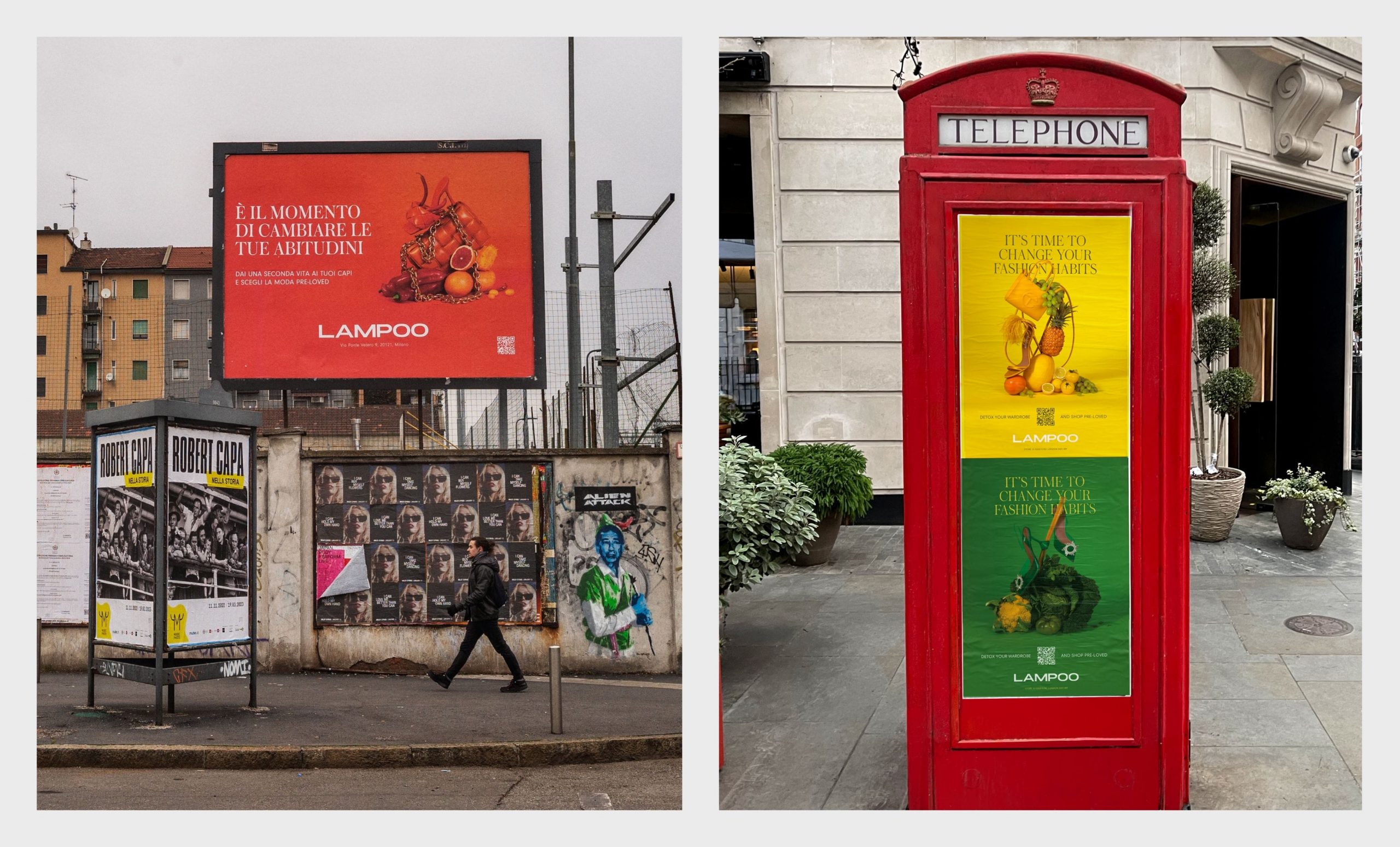
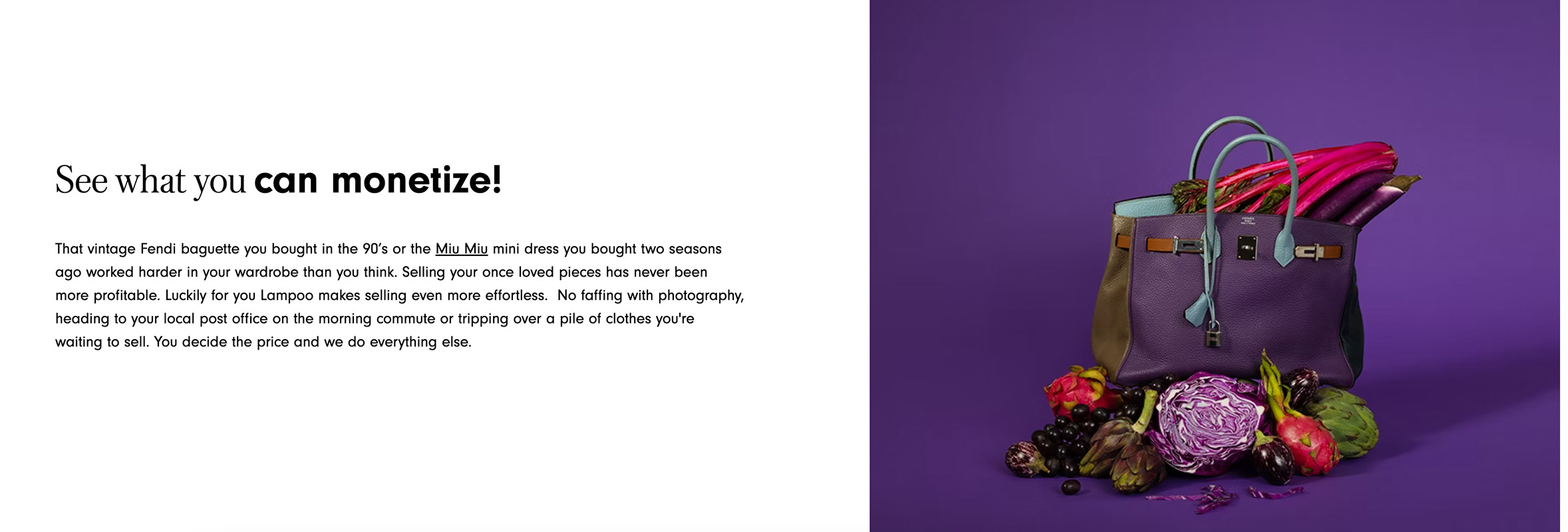
Waste is bad
Like anything, fashion destroys the planet both when it’s made and when it’s thrown away. (And in between, because we insist on washing clothes. Let’s ignore that for now.) Let’s start at the end, brace yourself for some nasty numbers. 85% of textiles are sent to landfills, synthetic materials in clothing are responsible for 35% of all plastic microfibers in the ocean. And due to the very nature of fashion, there are plenty of people who clear out their wardrobe seasonally, so purchases can become waste within six months. Plus 30% of garments are never sold. A lot of waste.
The good news
Passing on clothes to friends and family and reselling instantly stops this waste. It’s a direct, traceable, easy win and it’s on the increase, thanks in large part to places like Lampoo making it not only simple, but pleasurable and natural to sell your clothes. 82% of Gen Z now consider the resale value of apparel before buying it.
The cynical may question the value of the luxury fashion resellers from a purely ecological standpoint: how many Birkin bags end up on landfill? But that’s a little shortsighted, they are perfecting the second hand model for fast-fashion to scale up. And people do, now, seem to pause before putting a garment in the bin, realising that’s not the right thing to do. That’s progress.
Win, win?
More problematic is the idea that buying second hand reduces the production. Because there is the niggling worry that (whisper it) reselling simply funds further new purchases. Resellers have obviously looked into this and, what a relief, it’s fine, everything’s fine. They’ve come up with ‘displacement rates’: the percentage of second hand garments that have replaced the purchase of new ones. It’s obviously not going to be 100%, but it does range from 90% to 40%. Which is amazing. And things are heading in the right direction: the reseller market is tripling every three years, 90% of Brits are happy to buy second hand and in 2022 U.S. consumers bought 1.4 billion secondhand apparel items, rather than new ones, a 40% increase from 2021. A heartwarming 64% of Gen Z look for a second hand item first.
Yay, clothes production must be plummeting
You’d think. But there’s a huge disconnect between what a few thousand cutting edge, Gen Z, online research respondents state and what the population at large do. Secondhand makes up just 9% of the fashion market. We’re making and buying evermore apparel, the market continues to grow. Plus, it’s such a huge industry, we wouldn’t want it to crash. 1 in 6 on the globe make a living from it and they’re mostly women and poor.
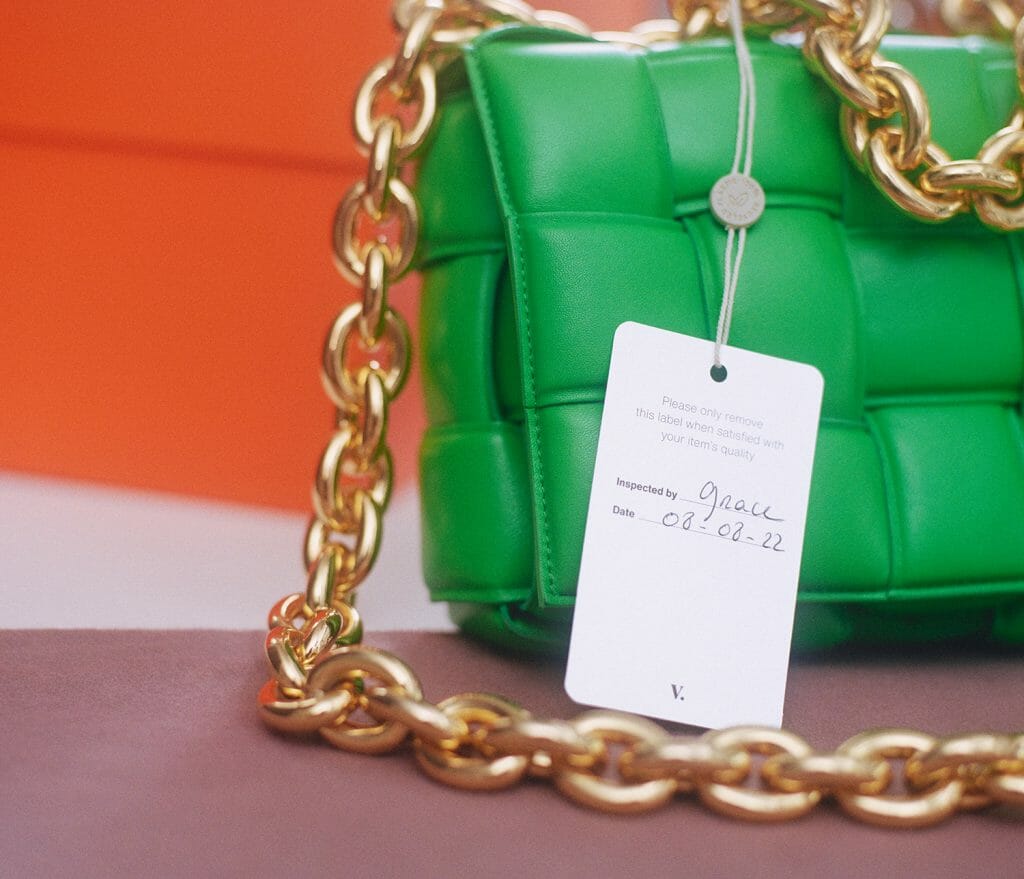
Is it an ‘overproduction’ issue?
We make 100 billion items of apparel a year for only 8 billion people.
Sounds bad, but that’s only 12 and a bit per person per year. Do you buy an item of clothing a month? Is that excessive?
Maybe the fashion industry has to change its habits: reduce pollution and waste!
They have: reducing the carbon impact of what they make by 12%, but increasing the amount they make by 13%.
We still want fashion to be… fashionable
There still needs to be a fashion industry, churning out exciting new clothes in all the sizes and colours, every season, for us to buy in the first place even if we resell it later.
Pay more for less?
So can we just blame fast fashion, the massive, polluting, exploitative elephant in the room? It produces huge quantities and therefore huge problems, so would we all be happy to pay more for less choice? Generally people answer that sort of question one way to a researcher and quite another way at the checkout.
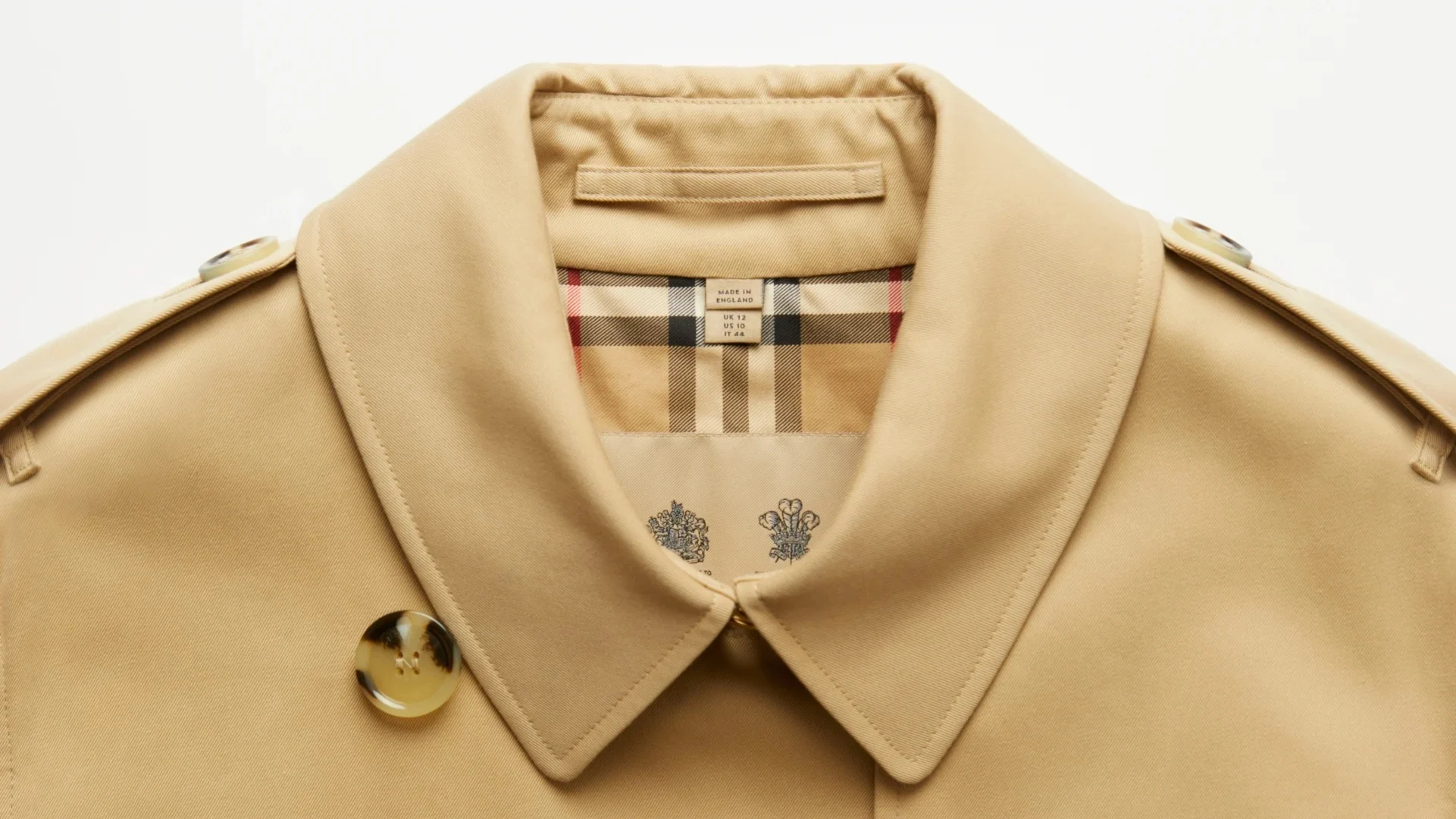
What would winning look like?
OK, let’s gloss over what is and look at the utopia that could be.
- At the current displacement growth rate, if retailers made one less item for every secondhand purchase, it could reduce production by not even 8%, by 2027.
- Buying and wearing secondhand clothing instead of new reduces carbon emissions by an average of 25%.
So there is no magic bullet, but the likes of Lampoo help enormously, they get us into better buying habits, that become the norm. The industry sees the benefits of cleaning up its act and then the issue is tackled by both consumer and producer. Solutions remain difficult to see, but we are reducing the damage we cause.
Text Sources
- UNECE.org
- ThredUP, Resale Report 2023
- McKinsey & Company, The State of Fashion 2024 Report
- Depop.com
- Independent.co.uk
- Theguardian.com
Image Source & Credits
- Lampoo
- Vestiaire Collective
